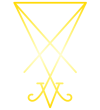Names of Zeus: An Daghdha
An Daghdha is considered the principal God of the traditional Celtic Irish pantheon and chief of the Tuatha Dé Danann. The name An Daghdha loosely translates to the "good God," though this does not only refer to his virtuousness, but to his set of skills so wide it set him apart from even other Gods. He was a peerless warrior, a craftsman, a musician, and a master of Druidic magic and alchemy.
CONNECTION TO OTHER GODS
Typically, An Daghdha was portrayed similarly to the Norse Thor and Odin (to which there are further parallels): a large-statured, red-bearded, wizened figure in a hooded cloak carrying a staff-club, and often portrayed possessing a cauldron or playing a harp.
An Daghdha held a variety of epithets that made these parallels even more apparent. “Eochaid Ollathair” could be taken to mean great horseman, or even All-Father. “Ruad Rofhessa” referred to his status as the Lord of Wisdom, showing a correlation with Marduk and Ahuramazda. “Fer Benn” could be taken to refer to his portrayal as a horned God, or his association with mountains and earth as a lord of the peak.
Lastly, connecting his mythemes further to Thor, “Cerrce” referenced him as one who strikes. As was mentioned in the Thor article, it can be noted the Sami people themselves referred to Thor with the epithet Good Man Thor, and An Daghdha's staff-club could slay men with one end and return them to life with the other.
TUATHA DÉ DANANN
For those who have not heard of the Tuatha Dé Danann, one must understand that what remains of Irish mythology (which is sadly little compared to the Ancient Greek, courtesy of Christian ruination) is extremely layered. The name itself literally translates to the children of the Goddess Danu, an obscure, presumably mother Goddess of the earth.
The Tuatha Dé Danann, in the context of medieval Ireland, were regarded as a forebear race. In a sense, this was a second stage of mythologization, an origin mythos heavily rooted in and re-creative of the Pagan mythology. Though it may seem confusing to some, it's worth explaining that medieval Christian works applied what's known as euhemerization, a sort of medieval pseudohistory.
In short, knowing that the population still held their ancient religion and ancestors in high regard, Christian missionaries began to recontextualize Pagan mythos to fit into a larger narrative that included drawing bloodlines to Hebrew Biblical figures. This would, in essence, shrink down Pagan history into little else other than a footnote where Gods were little more than men, magicians, and offshoots of the Biblical descendants of Noah and other false Israelite characters.
With this in mind, people can consider the centuries-long process of Celtic Paganism to appear like so: the original classic Irish Pantheon of the ancient world became the Tuatha Dé Danann during the earlier medieval period. Here, they were considered ancestral forebears of the people of Ireland, who vanished with the invasion of the modern-day Irish to the land. For the most part, these portrayals were still loyal to their traditional incarnations, at least in terms of mythemes and iconography. Later still, with yet more Christian pressure and the entropic march of time, the Tuatha Dé Danann became associated with (and minimalized into) the Aos Sí, also known as the Fae (Fairies) of folk superstition, which remain to this day, especially in rural regions and among older demographics.
Even despite this regression, it should be worth noting that the Aos Sí are still considered as having ancestral ties to the people of Ireland, and many folk superstitions revolve around treating them as house spirits who must be appeased (or at the very least, not offended) to avoid factors like poor harvests, ill luck, and curses, or as spirits of the wilder parts of the land, which provides an obvious parallel to the Elves of modern-day Scandinavian superstition.
Returning again to older perspectives, it's said that, when the Tuatha Dé Danann first arrived in Ireland themselves, they encountered (and subsequently went to war with) the Fomorians. For the most part, these Fomorians were regarded negatively, primarily as malevolent spirits associated with the underworld who faced their ultimate defeat in the Cath Maige Tuired.
To any who are well aware of Indo-European mythologies, this should already sound familiar, as the Tuatha Dé Danann and Fomorians can be considered akin to other Godly wars, like the Titanomachy and Gigantomachy of Greece, the Aesir/Vanir War of the Norse, and the conflicts of the Asura and Deva in Hinduism. More specifically, the Fomorians were often portrayed as brutal and monstrous, and prone to tyrannical oppression, similar indeed to the role of the giants in other cultural myths.
Though it was stated at greater length in the Thor article, it's worth restating here that giants typically represent the contrary to the ideal enlightened and ordered society, where consciousness has expanded and ethics along with it. Fomorians, in this sense, represent the harsh brutality of nature and rule by force alone. Oftentimes they are considered bringers of disease or misfortune, typical aspects that beset a society that has fallen out of divine order (to use an Egyptian term here, a society that has fallen away from ma'at).
Typically, the Fomorians were considered to have risen up from the dark and wet places under the earth, though in other instances, they were portrayed as vicious raiders from the sea. Some academics consider this the Celtic way of reconciling with the Viking raiding period, but what's perhaps more likely is that this is a cultural memory of the "Sea People" attested as appearing and having a hand in the Bronze Age cultural collapse.
One thing that certainly defines civilization is the notion of plenty. Food is often taken for granted in the modern Western world, but in the ancient context, the beginnings of agriculture were what enabled an intellectual class to exist in the first place. In a sense, food and plenty are the great enablers, and food itself is used as a symbol of abundance (see, for example, the Greek cornucopia) in the physical and spiritual sense alike. From there on, a thinking class may develop, whereafter there are inventions and society grows more sophisticated, with art and culture being the truest indications that a society is no longer surviving hand-to-mouth.
Before a major battle with the Fomorians, the Tuatha Dé Danann send An Daghdha to their base to distract them so as to leave them less prepared for the conflict. Believing they have him captured, they don't execute him straight away, wishing to humiliate him. Knowing his great size and love of food, the Fomorians present him with a great pit of it, enough that, to a tribe barely eking out an existence, it was inconceivable anyone could eat it all. Naturally, the challenge is that An Daghdha eats the entirety of it or is executed.
An Daghdha, however, finishes it all without an issue, laughing and slapping his stomach, making a great show of it, then turning and leaving without a fuss, only to return to the Tuatha Dé Danann and enter the conflict the following day, where he and Lugh (typically considered to be Azazel/Apollo) fight together and slay the evil, one-eyed King Balor (who had just slain the King of the Tuatha Dé Danann, Nuadha), whose single eye manifested destruction whenever it opened.
Every one of An Daghdha's blows slew nine men, and after the battle was won, An Daghdha resurrects Nuadha, arranging for his lost hand to be replaced with a magical one of silver (the parallels with the Norse Tyr should be well apparent here, and Nuadha was often paralleled with the British Nodens, whom the Romans considered akin to Mars).
Again referring to Norse myth, the similarity with Thor and his legendary appetite is already noteworthy, but there are further parallels to things that would surprise many. Budh the Red is another attested king of the Danaan. Old structures, converted to churches much like the so-called stave churches of Scandinavia, still bear iconography of trees and serpents. The Gundestrup Cauldron relic shows a horned figure in a yogic sitting position, clutching a serpent in one hand.
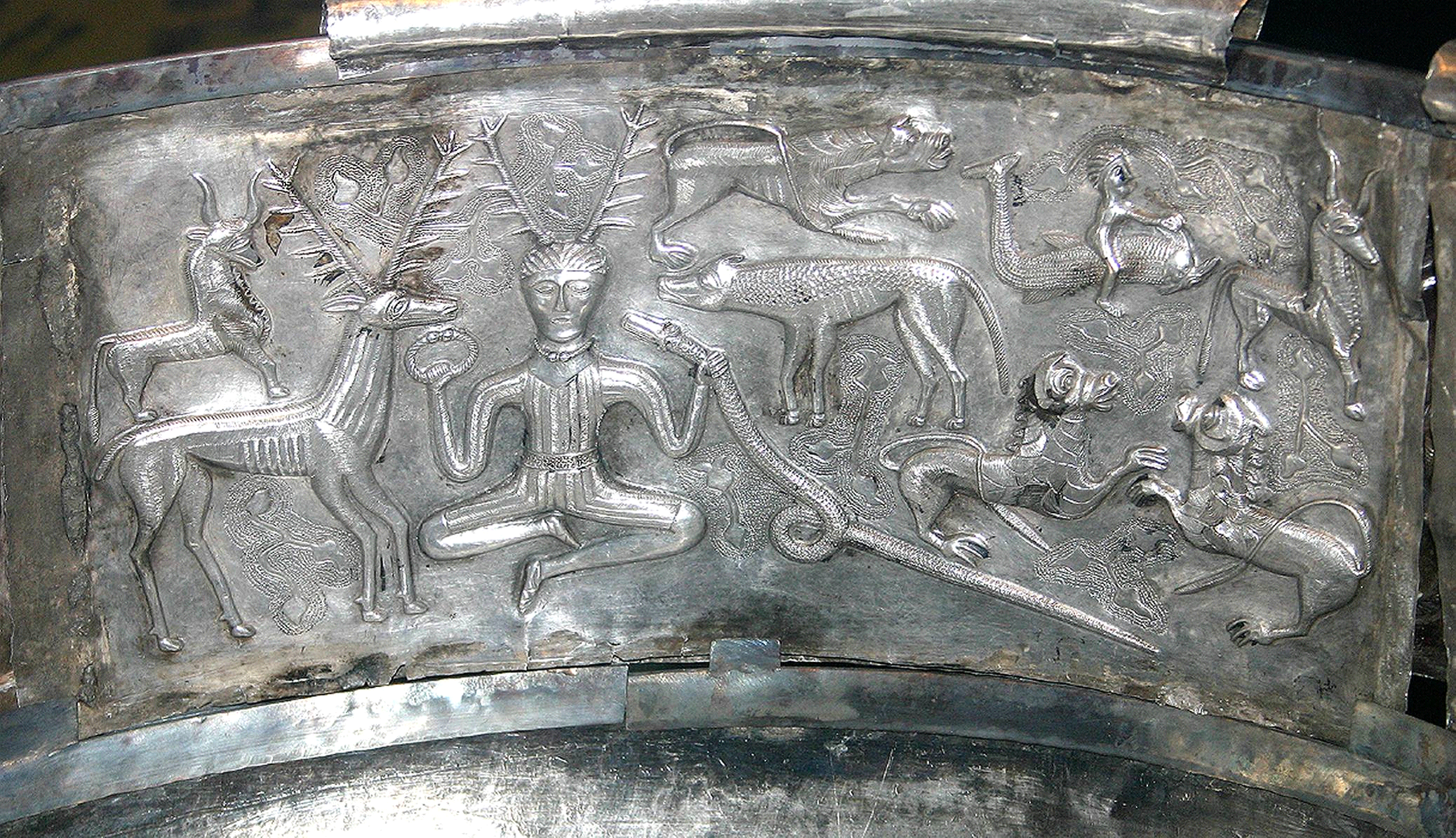
The obscurity and destruction of the old Druidic religion has led to a false belief that there is little of worth to be found in the old myths and legends of the Northern Isle, but this couldn't be further from the truth. Even the Budh is a known figure in the island, related to the title of Buddha.
An Daghdha, too, was known for his great thundering laugh. He too would trail the country with his endless mythical cauldron that never ran dry of nourishment, sharing it with his followers and his people, same as his legendary tree which never died and never ran out of fruit.
In the context of Norse myth, one can understand Odin and his runes represent, in part, the powers and influence of Mercury, a fact well-noted by the Romans when first encountering Germanic Paganism. In the Sanskrit language, Buddh quite literally refers to Mercury also. When one begins to consider the modern figure of Santa Claus as a later incarnation of Odin, and An Daghdha by extension, with his gift-giving, jolliness, and weighty figure, the preservation of these myths through time in various forms becomes apparent.
For those with knowledge of the runes, one can see the appearance of the gebo rune present in many of these mythemes. Gebo is a rune of gift-giving, binding agreements, sacrifice, sacred union, and innate talents. Even the colloquial term "X-mas" can be considered an unconscious representation of such. In the Norse Hávamál, it's stated: "A man should be loyal through life to friends, and return gift for gift; Laugh when they laugh, but with lies repay a false foe who lies."
Understanding gebo and its role in sexual magic also, one can look to An Daghdha's sacred union with the enigmatic and powerful Goddess Morrigan. The two meet on sacred Samhain, the Goddess standing with one foot on either side of the riverbank, washing herself. Being a Goddess of War, An Daghdha asks her to take part in the coming battle. She agrees, but only if the two engage in lovemaking there and then. Despite her fearsome reputation, An Daghdha is regarded as a legendary lover and has no compunctions.
The two form a tryst, a binding agreement, and Morrigan summons all the legendary magicians of Ireland to take part in destroying the Fomorians and their King. The Morrigan swears she will have the blood from his very heart, and later returns to the river with two handfuls of such, which she delivers into its waters.
Though, as is often the case in myths involving great and powerful lovers, An Daghdha loved more than one. While the Goddess of the River Boyne (located at Brú na Bóinne) has a husband who is out on a one-day errand, she and An Daghdha make love, and she instantly falls pregnant. Aware that her husband will be back after a single day, An Daghdha casts a spell that makes the sun appear as if it stood still. Nine months pass before her husband's return, and An Daghdha's son Aengus is born, considered the God of youth and beauty. This is not the only instance of An Daghdha's seasonal powers, as his legendary harp also grants him the power to put the seasons in their correct order.
NEWGRANGE
An Daghdha, then, is considered to have built Newgrange in Brú na Bóinne, a great tomb which is far more than simple legend. This sacred site, though built so long ago it remains one of the oldest ancient Pagan sites on the planet (with even conservative estimates suggesting 3200 BCE), still stands.
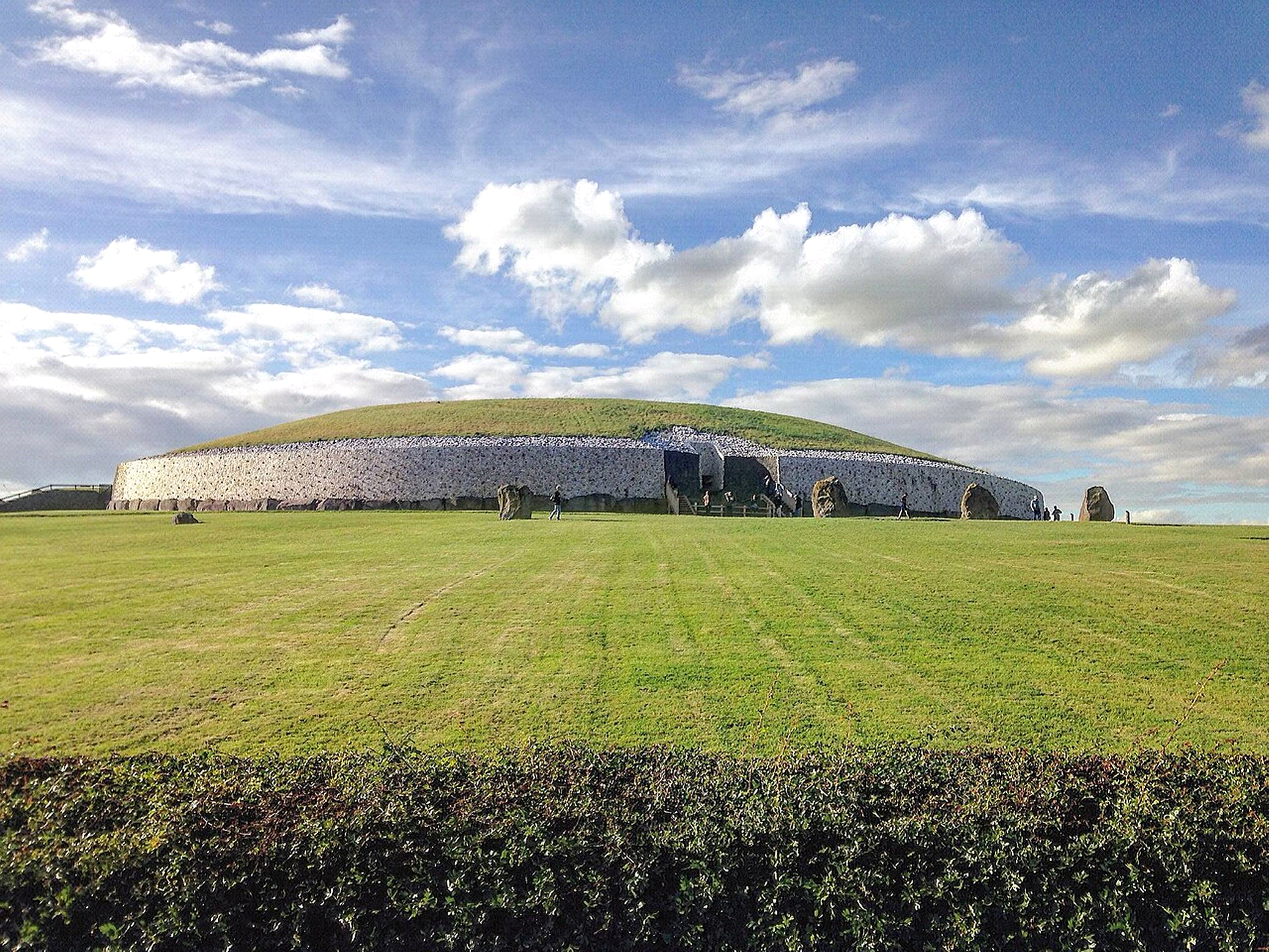
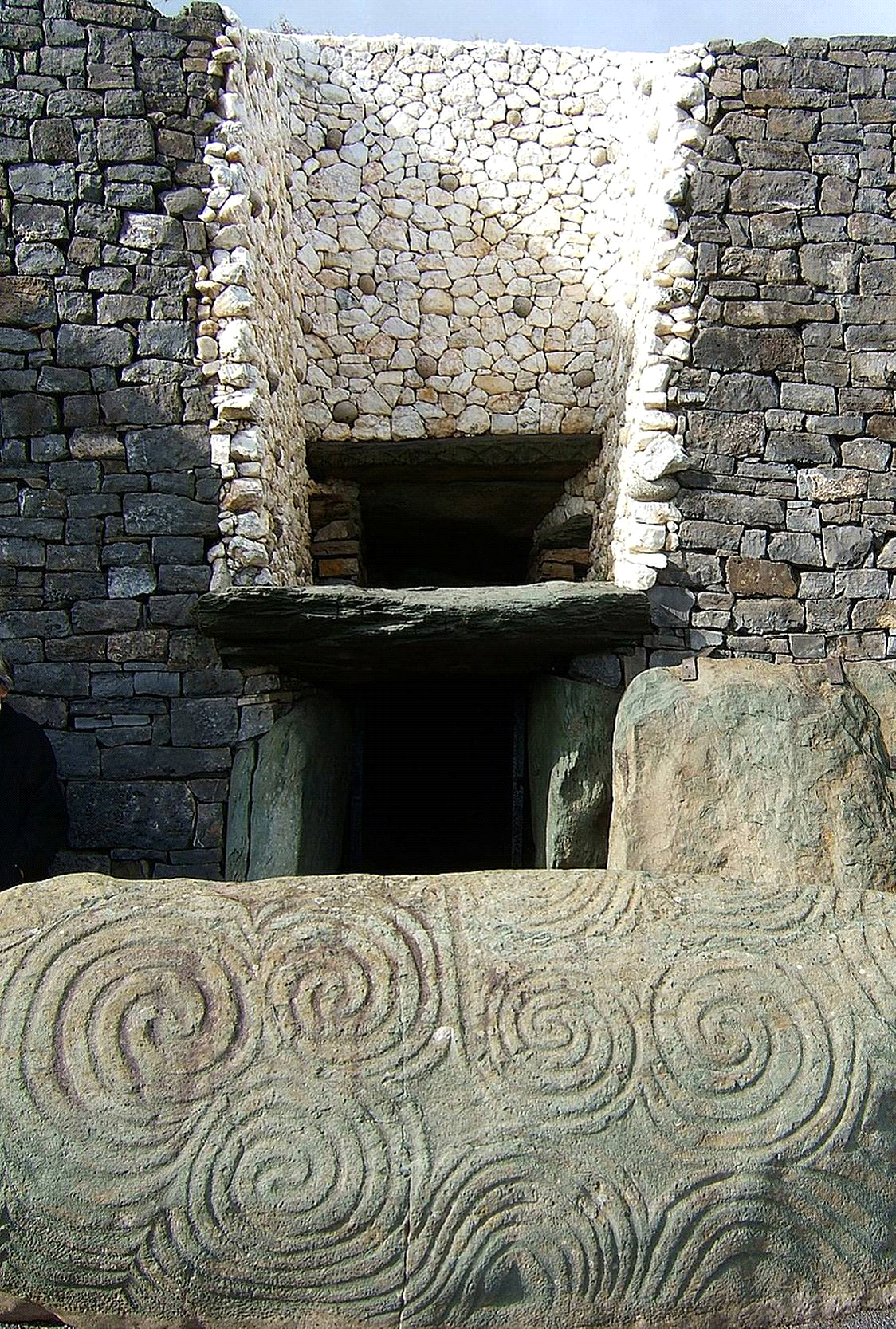
There's a consideration that this mytheme represents the winter solstice, as the light of the sun (allegorically An Daghdha himself) enters the inner sanctum of Newgrange only once a year during this time (as seen in the second image). During the brief window of the day when the sun's path stands still, the womb of Newgrange, symbolically the Goddess of Brú na Bóinne herself, is lit up. Importantly, the word solstice quite literally means “sun-standstill” in Latin. Aengus himself may represent the rebirth of the waxing sun and its triumph over the waning sun, as it's also considered in some myths that Aengus, using similar trickery to his father, inherits ownership of Newgrange.
Regardless of ownership, after the tenure of Nuadha, An Daghdha himself eventually becomes King, and he rules for even longer. At the end of the myth cycle, it's suggested that An Daghdha retreats to the barrows of Newgrange and continues to rule the Celtic Otherworld thereafter, fading further into myth and legend and becoming synonymous with the Fae powers that continue to dominate the pastoral lands of the Northern Isles in the minds of many.
CROM DUBH
An Daghdha is generally believed to be represented in later Irish myth by the figure Crom Dubh, who figures in part in the blasphemous legends involving the enemy Saint Patrick. Even despite this, there are still spiritual allegories present in these later folktales, which will be recognizable if one keeps in mind what has been stated about An Daghdha as a deity of fertility, the harvest, and of the gebo rune.
Upon Crom Dubh Sunday, which overlaps with Lughnasadh, it's said that Crom Dubh rises from the underworld, carrying Eithne, the corn maiden, on his back. He claims the first fruits of the harvest before retreating underground for winter. In some rural areas, people leave offerings like flowers, crops, or produce at places like the Altóir na Greine (Altar of the Sun) on Mount Callan, honoring his role as a fertility figure. The story paints him as a keeper of nature’s cycle, demanding tribute but also ensuring the land’s productivity.
Even among the Roman provinces of Gaul, the iconography of An Daghdha was well recognized among rural cults in the form of the God Sucellos: a strong, bearded figure also carrying the iconic cauldron and staff-club. In a prior legend, it was said An Daghdha drew up the borders of ancient Ireland during his tilling of the land so that it would be fertile, his massive staff dragging behind him, creating these borders. Again here, Sucellos was regarded as a God who protected the boundaries of properties and oversaw the deeper wilds. Even the etymology of the name, Su and cellos, can be taken to mean “good” and “striker,” or “the Good Striker” as a whole.
Though the figure of Saint Patrick most certainly did not exist, it's stated in certain legends that he personally oversaw the destruction of most, if not all, of the great Druidic texts of ancient Ireland and destroyed many of its idols. Despite this, the folklore of the Northern Isles at large lives on in the subtle places. Old structures still show the visage of the wild, green God, and folkloric elements of the old faith have never truly perished.
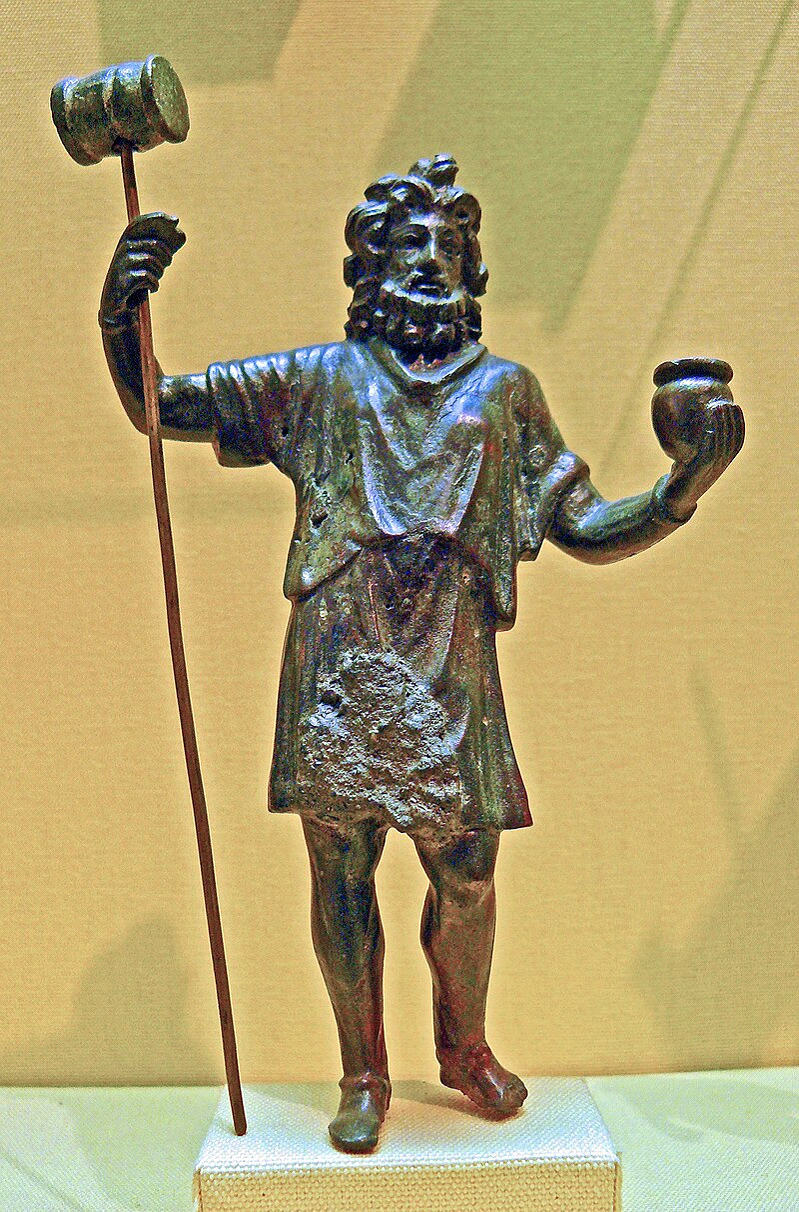
BIBLIOGRAPHY
Myth, Legend & Romance: An Encyclopaedia of the Irish Folk Tradition - Dáithí Ó hÓgáin
The Round Towers of Ireland or the History of the Tuatha Dé Danann - Henry O'Brien
The Battle of Moytura - J Frazer (as part of the Celtic Literature Collection)
CREDITS:
Arcadia (all of article)
Karnonnos [TG] (clarification)

 አማርኛ
አማርኛ العربية
العربية বাংলা
বাংলা Български
Български 中文
中文 Čeština
Čeština Dansk
Dansk Deutsch
Deutsch Eesti
Eesti Ελληνικά
Ελληνικά Español
Español Français
Français हिन्दी
हिन्दी Hrvatski
Hrvatski IsiZulu
IsiZulu Italiano
Italiano 日本語
日本語 Kiswahili
Kiswahili Magyar
Magyar Македонски
Македонски नेपाली
नेपाली Nederlands
Nederlands فارسی
فارسی Polski
Polski Português
Português Română
Română Русский
Русский Slovenščina
Slovenščina Suomi
Suomi Svenska
Svenska Tagalog
Tagalog Türkçe
Türkçe